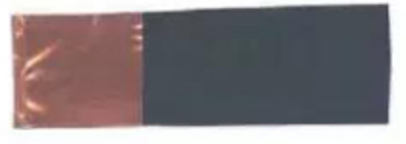By Ms. Yi Zhang of Chofn IP
According to Article 8 of the Chinese Trademark Law, a trademark can be composed of one or more of such elements as words, device, characters, numerals, three-dimensional signs, color combination, and sound. According to The Trademark Examination and Adjudication Guidance (2016) made by the China Trademark Office (CTMO) and the former Trademark Review and Adjudication Board (TRAB), a color-combination trademark refers to a mark composed of two or more colors.
As a rare element and type of trademark, a color-combination trademark differs from other trademarks in terms of features, examinations, applications, etc. I would introduce the Chinese perspective of color-combination trademarks as follows:
1. Features
Compared with other types of trademarks, a color-combination trademark has the following specific features:
-
The mark should be composed of two or more colors. Single color mark is certainly not a color combination. And single-color mark is absolutely objectionable in China;
-
The colors should be arranged in a certain order. The proportion or arrangement mode of a color-combination trademark should be relatively fixed. Since two or more colors can form many combinations, if the proportion and arrangement of the colors are randomly made without certainty, it will be difficult for the consumers to associate the colors with specific goods or services as source identifiers;
-
The mark should only be composed of pure colors, and such other elements as texts, designs are not part of the mark. The mark is not limited to a specific shape and its shape is generally different from the shape of the product itself.
For example, the color-combination trademark of “DURACELL” battery, includes two colors, bronze and black. The anode of the battery is bronze and the cathode is black. The shape of the trademark is determined by the shape of the battery.
From the following pictures, we can note that the shapes of the batteries in the actual use are different while the proportion or arrangement mode of the two colors is all the same.
|
(Registered TM No. 3037973) |
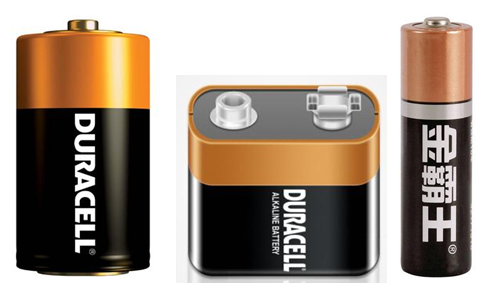
(The actually used trademark) |
2. Formality examination
In accordance with The Trademark Examination and Adjudication Guidance (2016), the formality examination of a color-combination trademark shall follow the principles below:
1) The applicant shall declare the color combination mark in the application form. Otherwise, even if the applicant applies for the mark with color patterns, the examiner will not automatically deem the mark as color-combination trademark;
2) The applicant shall submit clear trademark patterns. The trademark patterns should be color blocks indicating the way the colors are combined or graphic outline indicating where the colors are used. The graphic outline is not a composing element, but shall be indicated in a dashed line, rather than a solid line.
3) The applicant shall list the color name and color number in the trademark description and explain the specific pattern in commercial activities. Take the mark below for example.
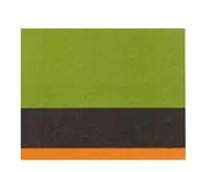
(Designated services: gas stations)
The color blocks can be described as: The mark is composed of three colors, namely, green, anthracite and orange. The color green (the color name is Pantone 368C) accounts for 60%, anthracite (Pantone 425C) 30%, and orange (Pantone 021C) 10%, arranged in the above pattern and used in the appearance of gas stations.
Here is also an example indicating the color use position with dashed graphic outline:
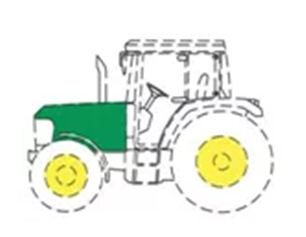
(Designated goods: Tip truck; Tractors)

(The actually used pattern)
The trademark can be described as: the color-combination mark is composed of two colors, green and yellow. The green is Pantone 364C and the yellow is Pantone 109C. The green color is used for the body of the products and the yellow color is used for the wheels. The dashed line is used to indicate the position of the color on the product. The vehicle outline and shape are not the components of the mark.
3. Substantial examination
1) Absolute-ground examination
If a mark only contains the natural colors of the designated goods or services, the commonly used colors of the products, the packaging and service places, etc., it is insufficient to distinguish the source. Such a mark shall be deemed as lack of distinctiveness. For example, the following trademark shall be rejected due to lack of distinctiveness.
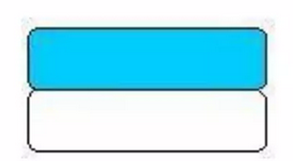
(Designated goods: laundry sheets)
In practice, a color-combination trademark can acquire distinctiveness through long-term extensive use. The China National Intellectual Property Administration (CNIPA) can issue office action requiring the applicant to file use evidence and arguments to prove that the applied-for mark has acquired distinctiveness through use.
2) Relative-ground examination
If the colors and arrangement sequences of two color-combination marks are the same or similar, the marks shall be deemed as identical or similar, like the two marks below.
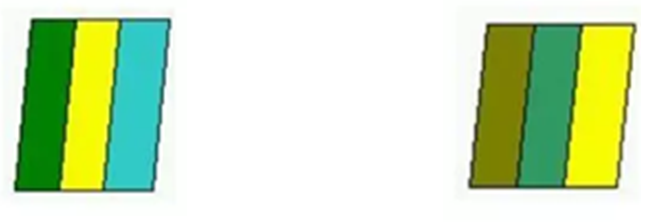
However, if the composing colors are different, or although the colors are the same or similar, the arrangement sequences are different, the marks will not be deemed as identical or similar, like the following marks.
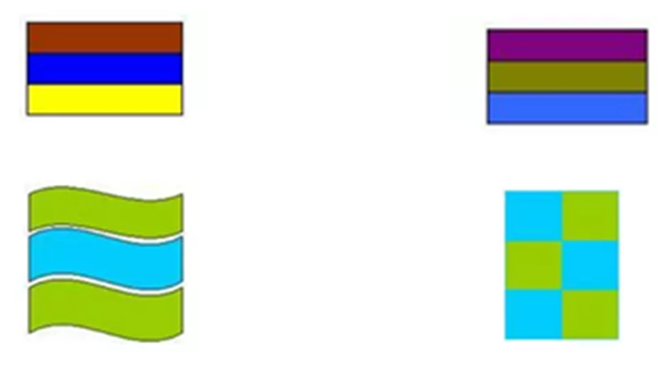
If a color-combination mark is identical with or similar to a common design trademark or three-dimensional mark in respect of designated colors, which may easily confuse the consumers, the marks shall be deemed as identical or similar. For example, the following marks shall be deemed as confusingly similar:

4. Ways of using
a) A color-combination trademark can cover the entire product surfaces, like the “DURACELL” battery color-combination trademark mentioned above.
b) A color-combination trademark can also cover specific positions of the product. Take the mark below for example. The orange is used on the engine hood and driving cab, the cream is used for the truck boom.

Another color-combination trademark below is used on the packaging and decoration. For example, the purple and yellow colors of the following mark are used on the surfaces of the interior wall, fitness equipment and chairs.
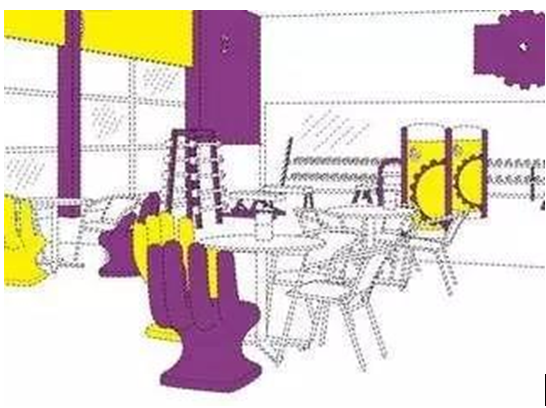
5. Further thoughts
Normally, the distinctiveness of a color-combination mark is weaker than traditional trademarks. When examining a color-combination mark, the examiners often issue office actions to require the applicant to file the use evidence to prove that the mark has acquired distinctiveness through use.
In China, I suggest that the owner use a color-combination trademark in the following ways:
1) Using the mark in a relatively fixed color combination. Do not change the color combination frequently;
2) Avoiding confusion of the color combination with the competitors, especially in the early promotion and use;
3) Promoting the color combination as trademark through long-term use to build one-to-one correspondence between the mark and the owner; and
4) Highlighting the color combination to the consumers in use and promotion activities.
Bibliography:
-
Reading and Understanding a Color-Combination Trademark- by Lixia Zheng, the WeChat Official Account of China Trademark Magazine, 20190131
-
![]() Introduction of color-combination trademark - Yi Zhang - 20200612.pdf
Introduction of color-combination trademark - Yi Zhang - 20200612.pdf

